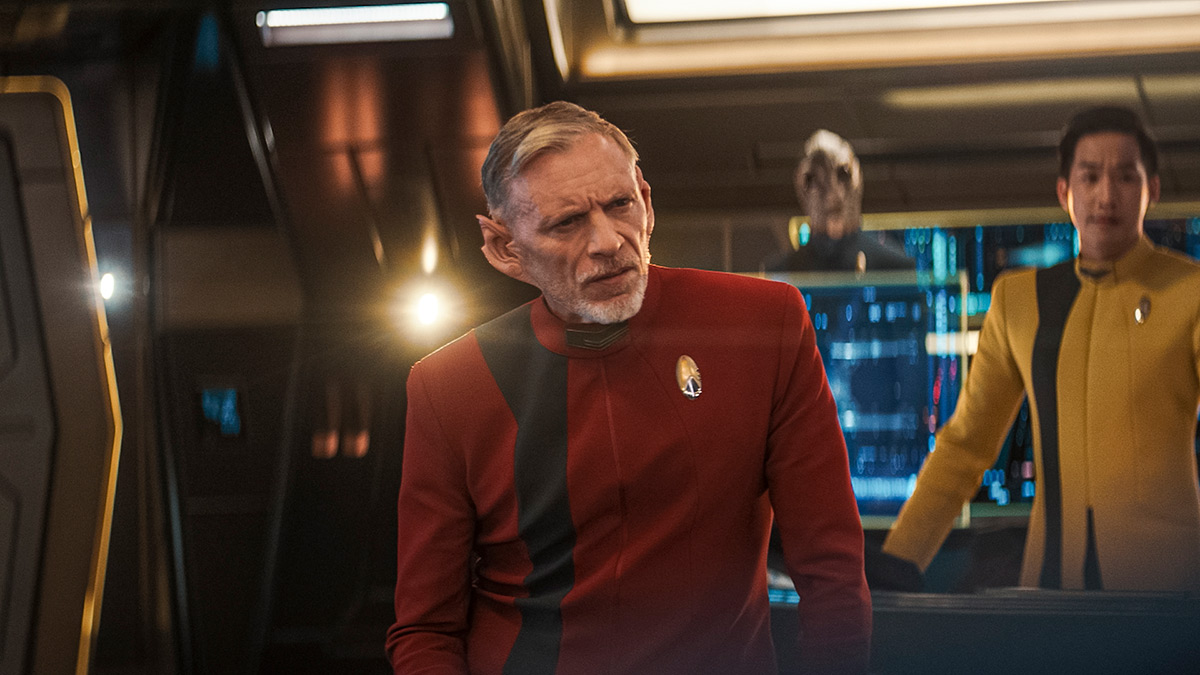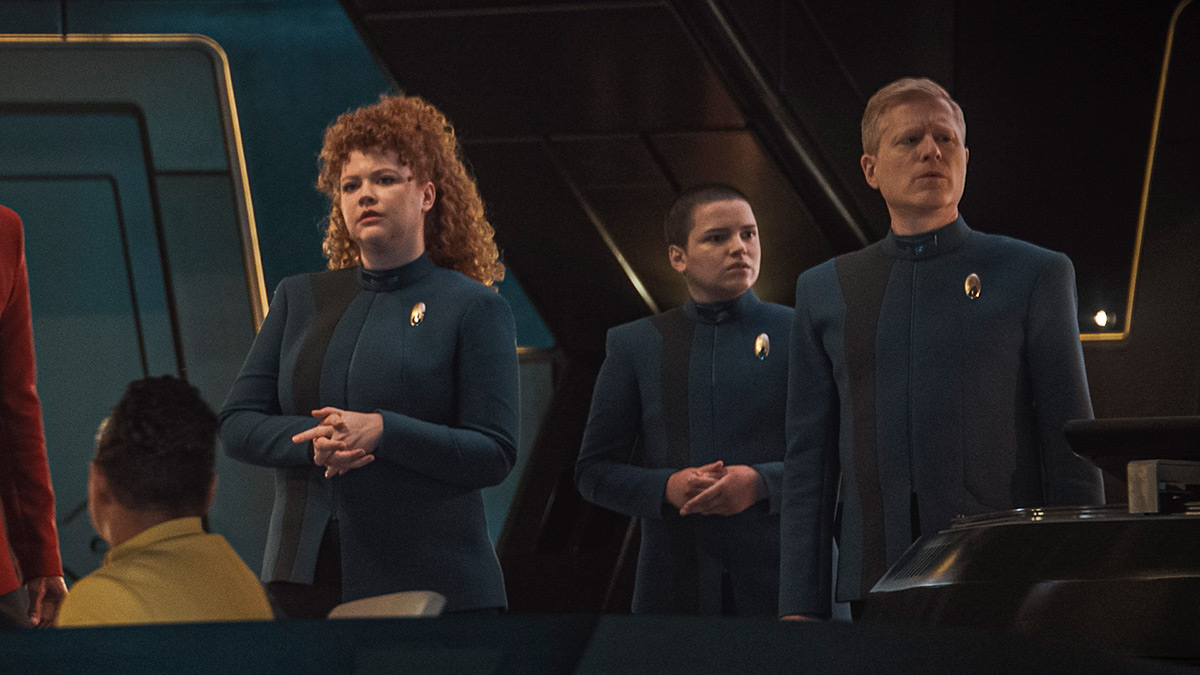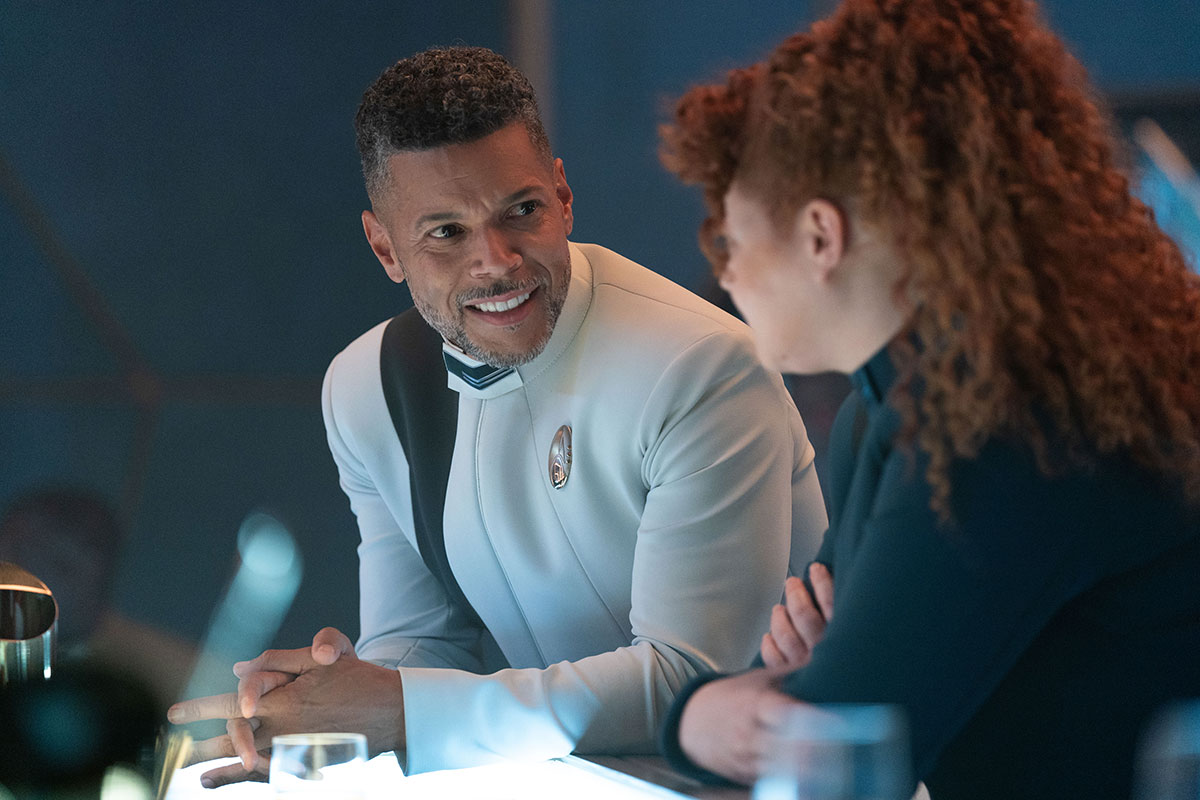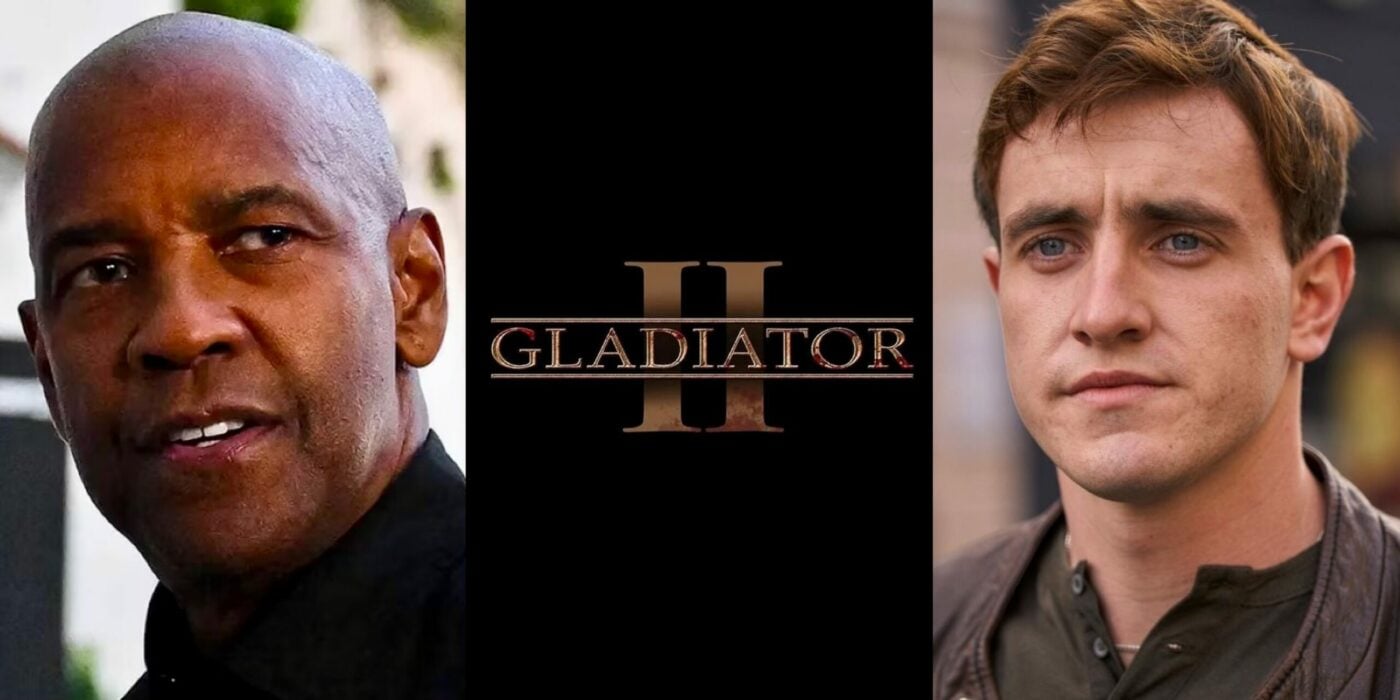‘Discovery’ Reflects on the Past in “Mirrors”
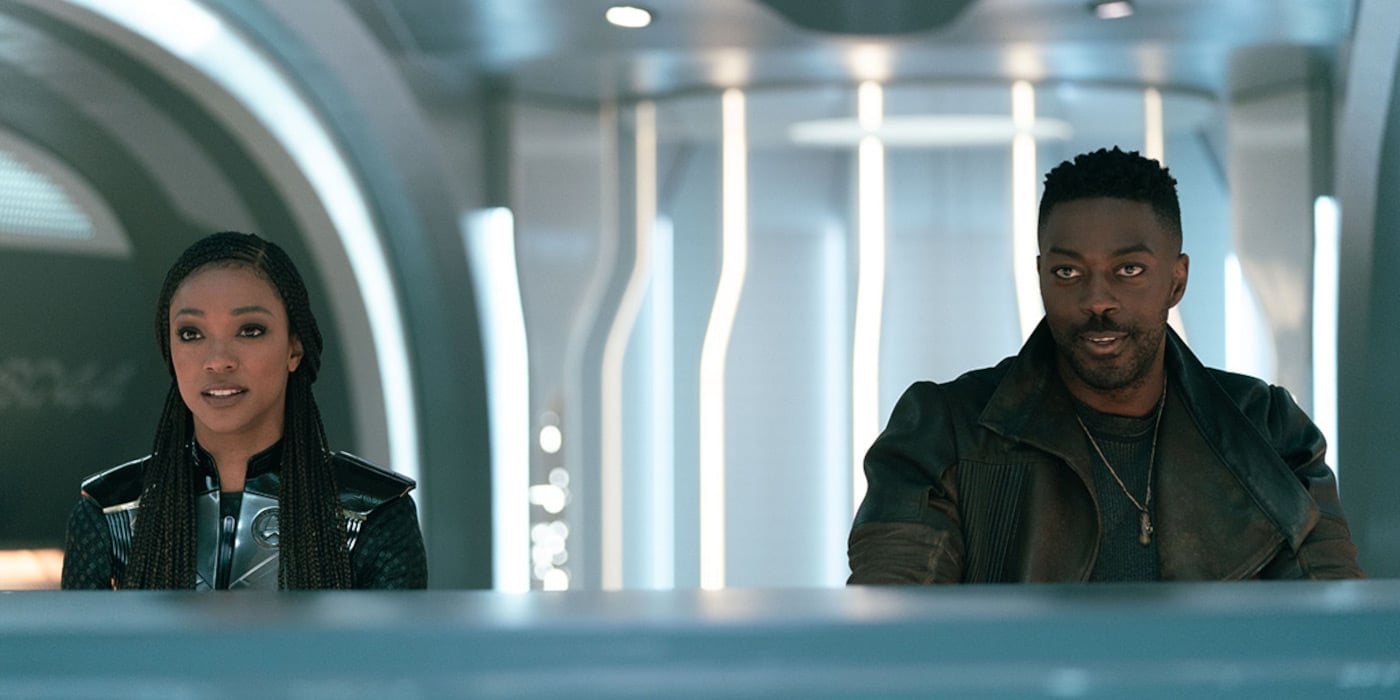
The “villains” for this season of Star Trek: Discovery are couriers. Two heroes from the show are, too. Are they so different? Yeah. Kinda.
There’s an interesting bit of repetition that’s happening throughout this fifth and final season of Star Trek: Discovery. Every episode throws back to the past in some way. “Red Directive” features a Soong-type android. “Under the Twin Moons” reflects on Saru’s history as he departs. “Jinaal” references a Star Trek: Deep Space Nine episode. And “Face the Strange” literally crisscrosses back and forth throughout DISCO’s timeline.
“Mirrors” is interesting in that it also features the past, but in a very different way. This time we’re witnessing a past we’ve never seen before. This time we learn how Moll and L’ak meet. And more importantly, we learn why they are so desperate to find and trade the Progenitor’s long-lost technology.
There’s a lot to like with “Mirrors” but there’s also some frustrating fan teasing happening as well. Let’s cover the plot quickly and dig in with the good ideas behind this story and where they may fall a little flat.
To Boldly Recap “Mirrors”
Moll and L’ak are missing. They tee up to a random point in space and, poof, they disappear. Turns out they disappear into a deeply unstable wormhole which leads to the next Progenitor-related clue. Burnham takes Book with her in a shuttle to investigate leaving a nervous Rayner as captain.
Inside the wormhole is a pocket universe containing Moll and L’ak’s jacked-up ship and the mirror universe I.S.S. Enterprise. Enterprise is deserted but apparently mirror universe Saru helped lead the ship and its crew out of their universe after they revolted against their fascist government. That’s nice!
Moll and L’ak find the clue first. Burnham and Book catch up but a bit of forcefield security shenanigans splits the parties. Now Book and Moll have to work together to save Burnham, L’ak, and themselves.
But the big story is Moll and L’ak’s past. Turns out, L’ak is Breen royalty. But he doesn’t fit in and winds up doing the dreg work and that includes interacting with dilithium merchant Moll. And Moll is a dirty dealer who cuts the dilithium to make a little more money. Rather than becoming enemies, Moll and L’ak work together. Over time, they even fall in love. And when Moll’s life is in jeopardy, L’ak kills his own to protect her, placing a price on both their heads. So they run.
In the present, Burnham gets Discovery to pull Enterprise out but not before L’ak is seriously wounded. He and Moll escape. Discovery gets the clue. The end.
To Boldly Review “Mirrors”
“Mirrors” has story structure problems. And that’s a shame because the stuff that works genuinely works very well. Up until now, we’ve been left to guess at Moll and L’ak’s motivations. And this romance where the prince falls for the pauper is touching and it has tension, too. Seeing L’ak betray his own family especially has some great weight.
Moll and L’ak’s backstory is so compelling that it should be more of this episode. Instead, we get these side plots that don’t quite connect. The most notable is Rayner’s plot. It makes sense for him to be nervous about taking the conn, but that’s story time better served elsewhere.
Ditto goes to finding out about alt-Saru and the fate of the I.S.S. Enterprise. Yes, that story is about the “bad guys” finding redemption and escaping—exactly what Moll and L’ak are trying to do. But these stories don’t intersect. Moll and L’ak don’t care about some mirror-mirror starship crew.
But the biggest bummer is that Book talks about how he and Burnham also used to be couriers, just like Moll and L’ak. And this idea of the two pairs connecting has been in the ether since “Red Directive”. But just like with the series premiere, that connection doesn’t go anywhere. It builds to nothing—at least so far.
By the end of “Mirrors” the alt-Enterprise is on its way to Starfleet. And I find myself wondering if it’ll return by the season’s end. It’s fine for that to sit out there unknown. However, by episode five, we should be filling the stress and tension that binds Moll and L’ak to Burnham and Book. And it just isn’t there yet.
Star Trek: Discovery and Faith
There’s one other plot in “Mirrors” that, despite multiple rewatches, I’m still not sure about one way or the other. Tilly realizes that Culber is struggling. They meet up in Ten Forward to talk things through. And Culber shares that he’s both pensive and elated by his experience on Trill. In fact, this entire hunt for the “meaning” of humanoid existence is kind of blowing Culber’s mind in a way he loves.
Culber frames his anxiety through his husband Paul Stamets. Culber says he thinks Paul won’t want to go on this journey with him. And Tilly observes that this is less of a scientific thing and more of a faith thing. Culber rejects this at first. But Tilly isn’t wrong. While clearly the Breen (and arguably Starfleet as well) are seeking the Progenitor tech for strategic purposes, the Discovery crew has far more philosophical motivations. They long to know what their purpose is. Why are they here?
It’s a dicey proposition. Star Trek: Deep Space Nine (usually) deals with religion in ways that add to narrative and character in equal measure. But let us never forget that most famous of questions: What does God need with a starship?
Deep Space Nine spends seven seasons building the lore around the Bajoran faith. Star Trek: Discovery is just starting to ask these questions in ways that, thus far, feel dangerously nonspecific. It can work! I ain’t against it! But with half a season gone already, if FAITH (of the heart or otherwise) is something they want to examine, they need to start wading in deeper and fast to make this journey worthwhile.
3/5

